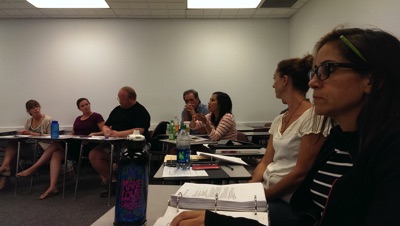About
In the spring of 2014 a vote of the full time faculty established the Faculty Assembly (FA) as the employee organization responsible for full time faculty working conditions at MiraCosta College. This change launched a new era in faculty working conditions at MiraCosta as the FA replaced the collective bargaining duties of the Academic Senate, which had worked to protect and promote the working conditions of full-time faculty for several decades.
In part, the creation of the FA was brought about as a byproduct of the rapid growth experienced by the college in recent years. Both the number of students and the number of full time faculty increased dramatically after the start of the new millennium. This growth made the job of the Academic Senate President—who effectively played both the role of AS leader and “union” leader—extraordinarily difficult.

Along with other challenges related to negotiations calls began to mount for a new approach to the handling of full time faculty working conditions. In late 2012 a group of faculty took on the task of evaluating our options. In doing so, a variety of possibilities were explored, including various types of unions. Ultimately, the decision was made to develop the Faculty Assembly model and bring that model before the full time faculty for consideration.
Supporters of the FA felt that unionization was an important option but ultimately decided to continue to address working conditions through what is known as an employee organization rather than a union. An employee organization uses a “meet and confer” approach to negotiations rather than the collective bargaining approach employed by unions. Reasons for the decision were, of course, very complex and a full explanation of the rationale may well require several pages to adequately explain. Suffice to say that the meet and confer was thought by most to be more consistent with MiraCosta traditions and better suited to our unique salary and budget circumstances.

Beginning in the fall of 2013, with the decision made to pursue the FA model, an Academic Senate ad hoc committee wrote the FA Constitution and Bylaws. After a near unanimous vote of the full membership of the AS, the responsibility for working conditions was passed to the Faculty Assembly and the Constitution and Bylaws of the FA were adopted. Soon after, elections were held in which a five-member Executive Committee was selected, and after consultation among the members of the Executive Committee, an additional 17 full time faculty members were appointed to the Faculty Assembly Council.